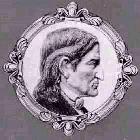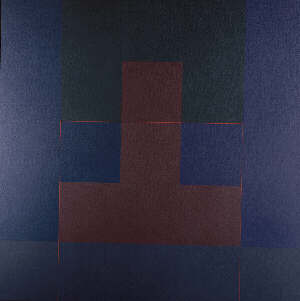
 |
Jose Maria Iglesiasa painter who has realized more than thirty individual exhibitions and a hundred collective exhibitions, |
|
Poet, painter, and graphics designer, Jose Maria Iglesias was born in Madrid in 1933. As an avid and diverse reader he discovered contemporary art through the Diccionario de Ismos (Dictionary of Isms) by Eduardo Cirlot. In 1956 he made a serious decision to be a painter and thus made contact with the Madrid art world. "Jose Maria Iglesias is a painter who has realized more than thirty individual exhibitions and a hundred collective exhibitions, while his work can be viewed in twenty-eight museums around the world. It can be said that he is considered one of the most important artists in Spanish contemporary painting. Above all his works there is order and balance. Encompassed in what has been called Constructivism, Pure Geometry, or, by others, "concretism," Iglesias likes to use dark colors, even if they seem linear and austere. He is concerned with investigating. He wants to create a work through his labor and art which makes the observer think - not just because of the final product, but just as much because of the coherent evolution. It is a serene and accurate reflection of his human personality, which is tranquil, reposed, and full of a peculiar sense of humor." (Enrique Moral Sandoval, Madrid Deputy Mayor and delegate on the Committee for Culture, Youth, Education and Sports) The painting represented here belongs to a stage of Iglesias' work referred to by himself as ELDAG, a word formed from Elucidacion Ludica de Argumentacion Geometrica (Ludic Elucidation of Geometric Argumentation). Iglesias himself states, "I attribute to Elucidation all types of rational, conservative and concrete art ... and to Delucidation art of an expressionistic nature, in which that which is subjective dominates and flourishes uncontrolled or almost so. That which is Ludic is clearer; an art born of the artist's free play." The Geometric Argumentation of this ELDAG is one of the many existing demonstrations of the Theorem of Pythagoras. Three Brief and Interchangeable Approximations for Ludic Elucidations by Jose MAria Iglesias: 1. " Shadow of the square is not square any longer. Where one color
ends another begins, but its transpiration is hardly perceptible. It is
seen that the spectrum has not passed through here, and that the epicenter
is generated only through that which is inert. The lines certainly
contribute to the good of the order of the whole; they distribute spaces,
classify the resulting angles, and avoid an assault which could be likened
to one of bamboo on volcanic rock. Violet blues, silent among the
submissive greys, oppose the reddish tones with the majestic determination
not to be alone. I am uncertain whether I dominate them or they me,
whether my voice is sure or if I think it. Yesterday a message of blue,
today one of silence. Without lights or gazes, silent tangencies are the
equivalent of interpretations which attain exactitude. Transposition and
elimination dilute the will and determination of something almost
imperceptible into a trace of nothingness." |

TITLE: ELDAG con recuadro rojo Please contact the Gallery to receive photographs of this or other work by the artist. Or schedule an appointment to see the work in person. Contact information is provided on our homepage. Works in Museums: |